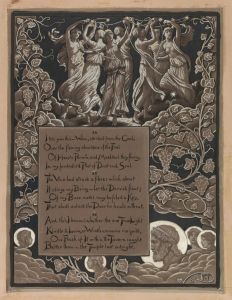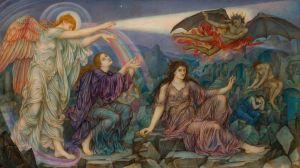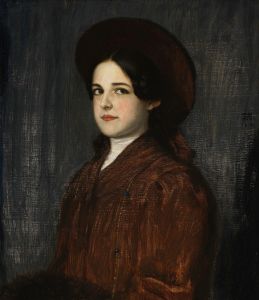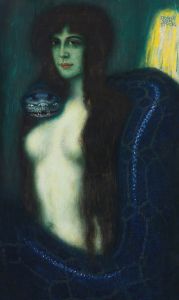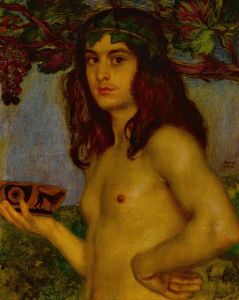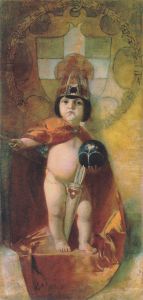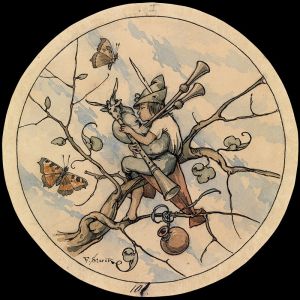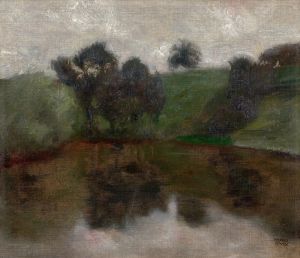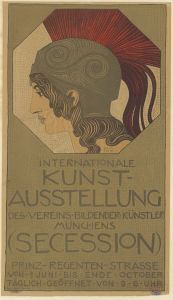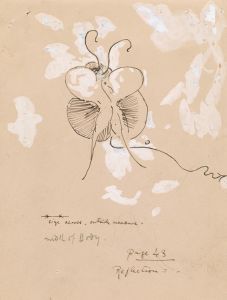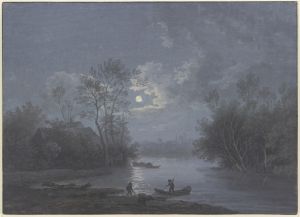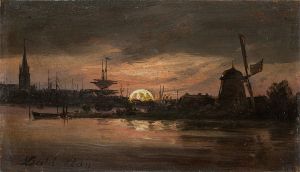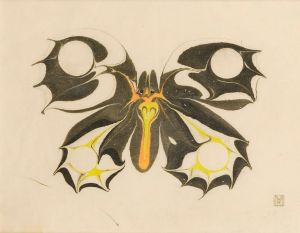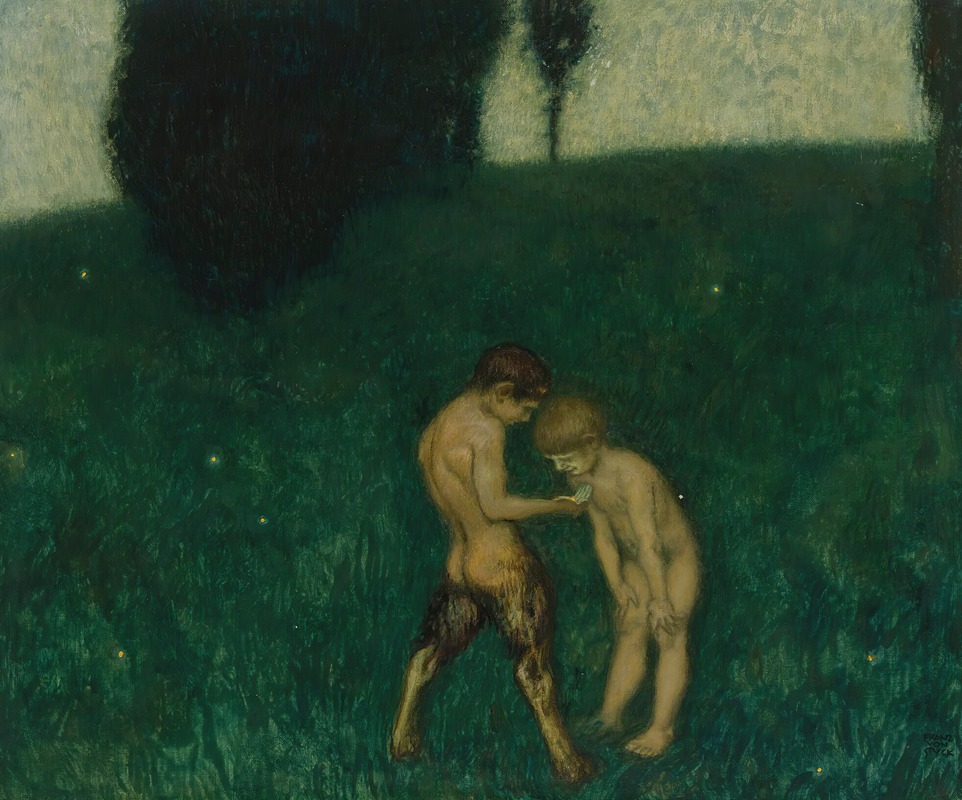
Glühwürmchen
A hand-painted replica of Franz von Stuck’s masterpiece Glühwürmchen, meticulously crafted by professional artists to capture the true essence of the original. Each piece is created with museum-quality canvas and rare mineral pigments, carefully painted by experienced artists with delicate brushstrokes and rich, layered colors to perfectly recreate the texture of the original artwork. Unlike machine-printed reproductions, this hand-painted version brings the painting to life, infused with the artist’s emotions and skill in every stroke. Whether for personal collection or home decoration, it instantly elevates the artistic atmosphere of any space.
Franz von Stuck was a prominent German painter, sculptor, and architect, known for his role in the Munich Secession movement and his contributions to Symbolism in art. One of his notable works is "Glühwürmchen," which translates to "Fireflies" in English. This painting exemplifies Stuck's characteristic style, which often combines elements of mythology, allegory, and a fascination with the mystical aspects of nature.
"Glühwürmchen" captures the enchanting and ephemeral beauty of fireflies, creatures that have long been associated with mystery and the supernatural due to their bioluminescent glow. Stuck's depiction of these insects is likely to be imbued with a sense of wonder and an exploration of the interplay between light and darkness, a common theme in his oeuvre. His work often reflects a deep interest in the contrasts between the seen and unseen, the known and the unknown, which is fitting for a subject like fireflies that illuminate the night.
Franz von Stuck was born in 1863 in Tettenweis, Bavaria, and he became one of the leading figures in the Munich art scene by the late 19th century. He co-founded the Munich Secession in 1892, a group that sought to break away from the conservative art establishment and promote more modern and progressive artistic expressions. Stuck's work is often associated with Symbolism, a movement that emphasized the expression of ideas and emotions through symbolic imagery and themes.
In his paintings, Stuck frequently drew upon mythological and allegorical subjects, using them to explore deeper philosophical and existential questions. His style is characterized by a dramatic use of light and shadow, a rich color palette, and a meticulous attention to detail. These elements are likely present in "Glühwürmchen," contributing to its atmospheric and evocative quality.
Stuck's influence extended beyond painting; he was also a respected teacher at the Academy of Fine Arts in Munich, where he mentored several students who would go on to become significant artists in their own right, including Paul Klee and Wassily Kandinsky. His impact on the art world was recognized during his lifetime, and he was awarded numerous honors, including being ennobled by the Bavarian King Ludwig III in 1905.
While specific details about "Glühwürmchen" may not be extensively documented, the painting fits within the broader context of Stuck's artistic vision and thematic interests. His work often invites viewers to contemplate the mysteries of nature and the human condition, using visual symbolism to evoke a sense of wonder and introspection.
Franz von Stuck's legacy continues to be celebrated in art history, and his works are held in high regard for their technical skill and imaginative depth. "Glühwürmchen," like many of his paintings, serves as a testament to his ability to capture the intangible and the ethereal, inviting viewers to explore the boundaries between reality and fantasy.





